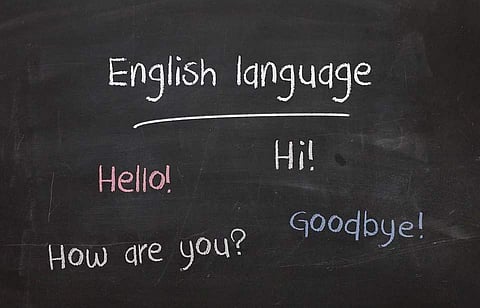

A few minutes before I started writing this, I received the message below on WhatsApp:
Britisher: Quite surprising! Not a single politician in India has tested positive for the Coronavirus whereas in other countries a number of politicians, including the British Prime Minister and some top-ranking ministers, have tested positive. Great, isn’t it?
Indian: Great? Yes, great, indeed.
Britisher: Must be a great success story. What’s the secret behind it?
Indian: Success story? Secret? No secret at all. Our politicians meet voters only once in five years and they strictly follow social distancing once they get elected.
Britisher: Really? You mean it?
A good joke, isn’t it? I’m not going to discuss the joke here. My focus is on the aspect of spoken grammar. It is a very casual chat. It sounds natural. The language is simple. The chat between the two persons contains both written and spoken grammar. In other words, it has both formal and informal grammar.
What is the difference between the grammar of writing and the grammar of speaking?
Spoken grammar (SG) is the grammar of everyday interaction. It is informal and natural. SG is flexible in its word order. The 100 most common words in written grammar are prepositions, pronouns and articles - the small words which give correct grammatical structure to sentences. In spoken English, many of the top 100 words are verbs.
The characteristics of spoken grammar are: ellipsis, heads, tails, fillers, backchannels and phrasal chunks.
Ellipsis is the omission of elements normally part of a certain structure. Examples:
-“Do you have any questions?” (No ellipsis)
-“Any questions?” (Ellipsis)
- “It sounds good.” “It is absolutely right.” “It is wonderful.” (No ellipsis)
- “Sounds good” “Absolutely right” “Wonderful” (ellipsis)
Dislocation is a sentence structure in which a constituent occurs outside the clause boundaries, either to its left or to its right. Heads, also known as left-dislocation, are a way to introduce and orient listeners to a topic before giving information on the topic. Examples:
-“The T20 finals last night, it was really exciting.” (With head)
-“The T20 finals last night was really exciting.” (No head)
Tails Tails, also known as right-dislocation, are comments that are added to the end of a phrase. Examples:
-“My colleague is a nice person, the one from New Zealand.” (With tail)
-“My colleague from New Zealand is really nice.” (No tail)
Fillers are words and utterances like “er,” “well,” “hmm,” and “um” that do not have a specific meaning but rather fill time and allow the speaker to gather his or her thoughts. Backchannels, on the other hand, are words and utterances like “uh-huh,” “oh,” “yeah,” and “I see” that are used to acknowledge what the speaker is saying and encourage him or her to continue.
Phrasal chunks Chunks are fixed words or phrases that can combine with other elements but act as ready-made lexical units of language. Examples: sort of / kind of / stuff like that, You know, I mean
In the play “Refund”, we find numerous examples of spoken grammar. Here is an extract from the play:
Principal: Well, what is it?
Servant: A man, sir. Outside. He wants to see you.
Principal: [leaning back and stretching]: I receive parents only during office hours. The particular office hours are posted in the notice-board. Tell him that.
Servant: Yes, sir. Yes, sir. But it isn’t a parent, sir.
Principal: A pupil?
Servant: I don’t think so. He has a beard.
Principal [disquieted]: Not a parent and not a pupil. Then what is he?
Servant: He told me I should just say ‘Wasserkopf.’
Principal [much disquieted]: What does he look like? Stupid? Intelligent?
Learners of English should be familiar with spoken grammar in order to speak the language naturally.
